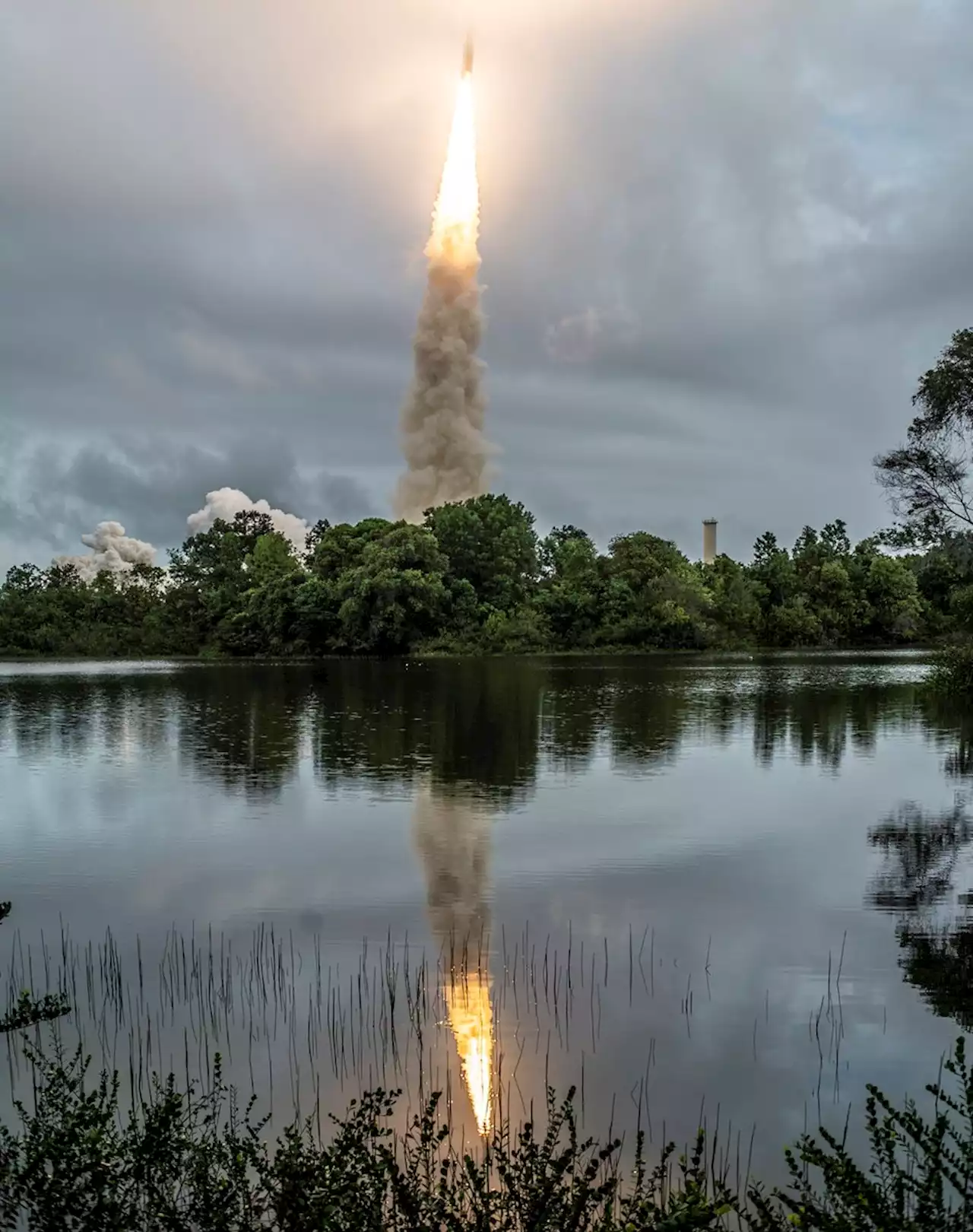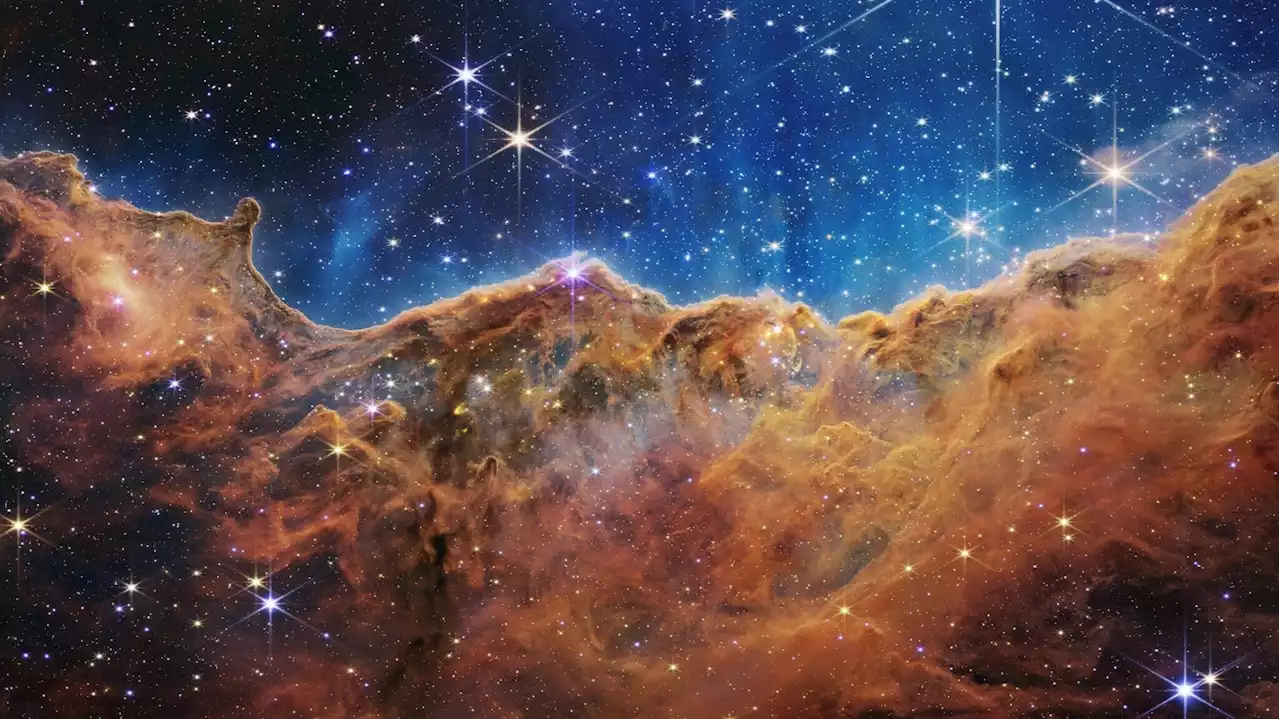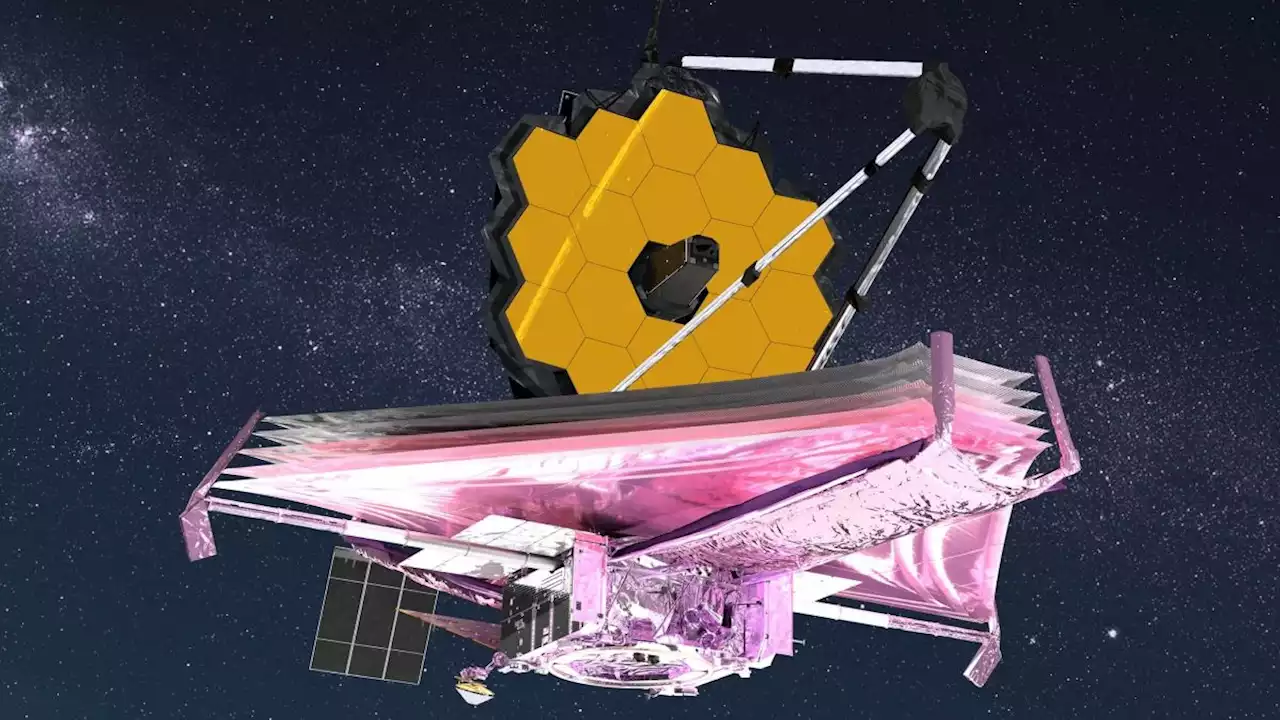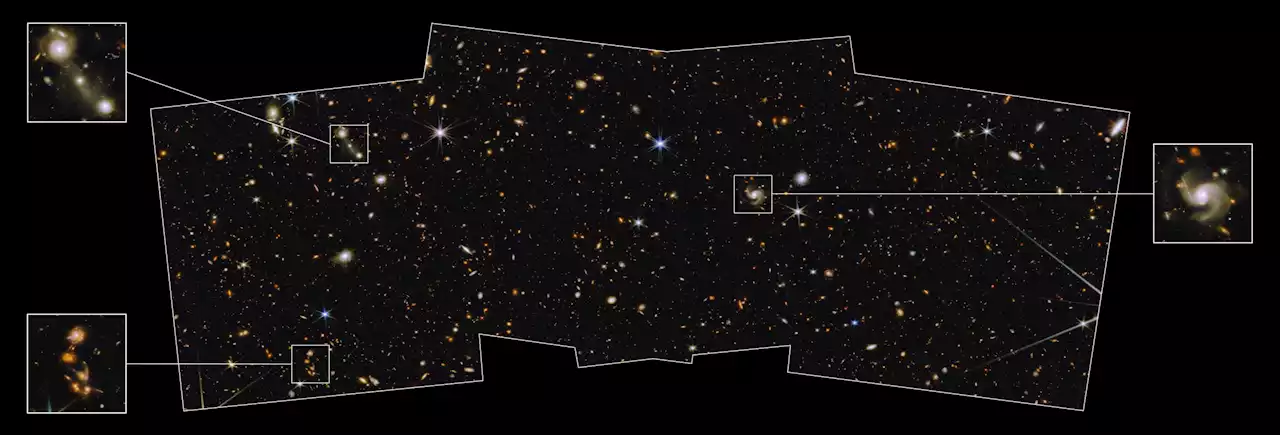From its perch a million miles away, NASA’s James Webb Space Telescope is revealing a universe that’s richer and more perplexing than astronomers previously imagined
. Those included the distances to some of the farthest galaxies yet discovered, newly observed ancient star clusters, a cloud of water surrounding Saturn’s moon Enceladus, and symmetric dust shells enveloping a big, blustery star—puffs of particles that are regularly blown out by the star itself.
Shells of cosmic dust appear like tree rings around the star Wolf-Rayet 140 in this JWST image. Wolf-Rayet stars are at an advanced stage of their lifecycles, releasing heavy elements into space, and this one is part of a binary system with an O-type star, one of the most massive star types known.
“All of a sudden, the fog lifts and your heart just beats faster,” he says. “It just takes your breath away. You see nature in incredible colors—and it’s more beautiful than you ever imagined.”Please be respectful of copyright. Unauthorized use is prohibited.: The winding spiral structure of the galaxy IC 5332 is revealed in ultraviolet and visible light captured by the Hubble Space Telescope. Dark, dusty regions seem to separate the spiral arms.
“The reason I was so emotionally overwhelmed by it was the recognition that what I’m looking at has always been there—for billions of years—almost an overwhelmingly long time, and yet we hadn’t seen it,” Zurbuchen says. “This is the beginning of a journey into the unknown, with a new set of eyes.”Please be respectful of copyright. Unauthorized use is prohibited.
Composite by X-ray: NASA/CXC/SAO/PSU/D. Burrows et al.; Optical: NASA/STScI; Millimeter: NRAO/AUI/NSF): Cassiopeia A is the remnant of a once massive star that died in a violent supernova explosion 325 years ago. It consists of a dead star, called a neutron star, and a surrounding shell of material that was blasted off as the star died.
United States Latest News, United States Headlines
Similar News:You can also read news stories similar to this one that we have collected from other news sources.
 Webb Image Release- Webb Space Telescope GSFC/NASAThe Latest NASA Released Webb Image is featured on this page. The James Webb Space Telescope's revolutionary technology will study every phase of cosmic history—from within our solar system to the most distant observable galaxies in the early universe. Webb’s infrared telescope will explore a wide range of science questions to help us understand the origins of the universe and our place in it. Seeking Light from the First Galaxies in the Universe Webb will directly observe a part of space and time never seen before. Webb will gaze into the epoch when the very first stars and galaxies formed, over 13.5 billion years ago. Ultraviolet and visible light emitted by the very first luminous objects has been stretched or 'redshifted' by the universe's continual expansion and arrives today as infrared light. Webb is designed to “see” this infrared light with unprecedented resolution and sensitivity. Exploring Distant Worlds and the Solar System Webb will also be a powerful tool for studying the nearby universe. Scientists will use Webb to study planets and other bodies in our solar system to determine their origin and evolution and compare them with exoplanets, planets that orbit other stars. Webb will also observe exoplanets located in their stars’ habitable zones, the regions where a planet could harbor liquid water on its surface, and can determine if and where signatures of habitability may be present. Using a technique called transmission spectroscopy, the observatory will examine starlight filtered through planetary atmospheres to learn about their chemical compositions.
Webb Image Release- Webb Space Telescope GSFC/NASAThe Latest NASA Released Webb Image is featured on this page. The James Webb Space Telescope's revolutionary technology will study every phase of cosmic history—from within our solar system to the most distant observable galaxies in the early universe. Webb’s infrared telescope will explore a wide range of science questions to help us understand the origins of the universe and our place in it. Seeking Light from the First Galaxies in the Universe Webb will directly observe a part of space and time never seen before. Webb will gaze into the epoch when the very first stars and galaxies formed, over 13.5 billion years ago. Ultraviolet and visible light emitted by the very first luminous objects has been stretched or 'redshifted' by the universe's continual expansion and arrives today as infrared light. Webb is designed to “see” this infrared light with unprecedented resolution and sensitivity. Exploring Distant Worlds and the Solar System Webb will also be a powerful tool for studying the nearby universe. Scientists will use Webb to study planets and other bodies in our solar system to determine their origin and evolution and compare them with exoplanets, planets that orbit other stars. Webb will also observe exoplanets located in their stars’ habitable zones, the regions where a planet could harbor liquid water on its surface, and can determine if and where signatures of habitability may be present. Using a technique called transmission spectroscopy, the observatory will examine starlight filtered through planetary atmospheres to learn about their chemical compositions.
Read more »
 ‘Pillars of Creation’: James Webb telescope shows lush landscape of space first seen by HubbleThe Webb telescope’s mirrors were made in Alabama and assembled and tested for cold resistance at NASA’s Marshall Space Flight Center in Huntsville.
‘Pillars of Creation’: James Webb telescope shows lush landscape of space first seen by HubbleThe Webb telescope’s mirrors were made in Alabama and assembled and tested for cold resistance at NASA’s Marshall Space Flight Center in Huntsville.
Read more »
 How the James Webb Space Telescope transformed astronomy this yearOne year ago, on Christmas Day, the James Webb Space Telescope was launched. Since it began collecting data, it has captured - in stunning detail - previously unobservable stars, planets and galaxies.
How the James Webb Space Telescope transformed astronomy this yearOne year ago, on Christmas Day, the James Webb Space Telescope was launched. Since it began collecting data, it has captured - in stunning detail - previously unobservable stars, planets and galaxies.
Read more »
 10 incredible James Webb Space Telescope images reveal the wonders of the universeThe Hubble telescope continues to be a great scientific instrument and can see at optical wavelengths where the JWST cannot. But the Webb telescope can see much further into the infrared with greater sensitivity and sharpness.
10 incredible James Webb Space Telescope images reveal the wonders of the universeThe Hubble telescope continues to be a great scientific instrument and can see at optical wavelengths where the JWST cannot. But the Webb telescope can see much further into the infrared with greater sensitivity and sharpness.
Read more »
 James Webb Space Telescope's 1st year in space has blown astronomers awayKeith Cooper is a freelance science journalist and editor in the United Kingdom, and has a degree in physics and astrophysics from the University of Manchester. He's the author of 'The Contact Paradox: Challenging Our Assumptions in the Search for Extraterrestrial Intelligence' (Bloomsbury Sigma, 2020) and has written articles on astronomy, space, physics and astrobiology for a multitude of magazines and websites.
James Webb Space Telescope's 1st year in space has blown astronomers awayKeith Cooper is a freelance science journalist and editor in the United Kingdom, and has a degree in physics and astrophysics from the University of Manchester. He's the author of 'The Contact Paradox: Challenging Our Assumptions in the Search for Extraterrestrial Intelligence' (Bloomsbury Sigma, 2020) and has written articles on astronomy, space, physics and astrobiology for a multitude of magazines and websites.
Read more »
 Webb Space Telescope Captures North Ecliptic Pole – Studded With Galactic DiamondsNASA’s James Webb Space Telescope has captured one of the first medium-deep wide-field images of the cosmos, featuring a region of the sky known as the North Ecliptic Pole. The image, which accompanies a paper published on December 14 in the Astronomical Journal, is from the Prime Extragalactic Area
Webb Space Telescope Captures North Ecliptic Pole – Studded With Galactic DiamondsNASA’s James Webb Space Telescope has captured one of the first medium-deep wide-field images of the cosmos, featuring a region of the sky known as the North Ecliptic Pole. The image, which accompanies a paper published on December 14 in the Astronomical Journal, is from the Prime Extragalactic Area
Read more »
